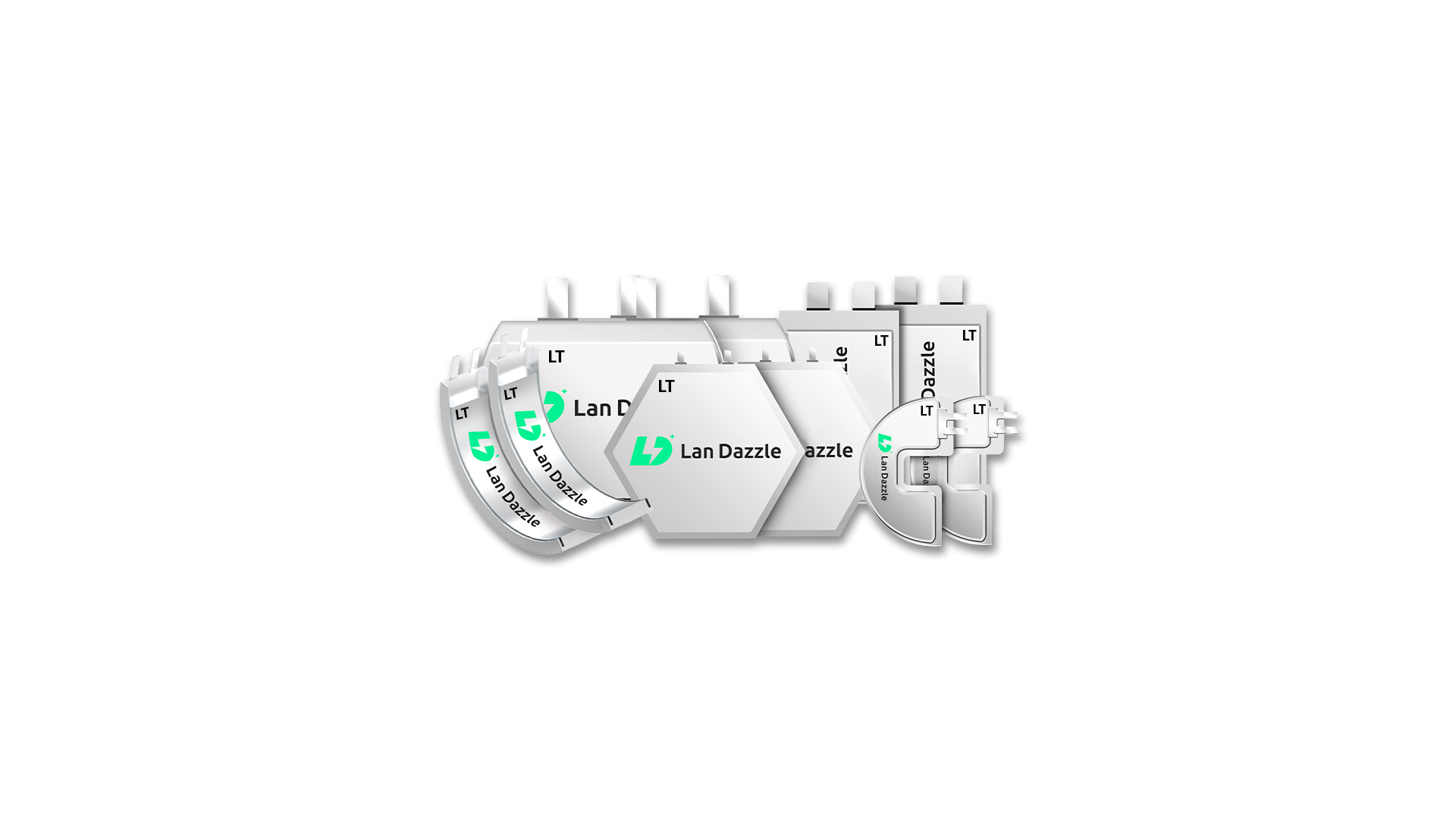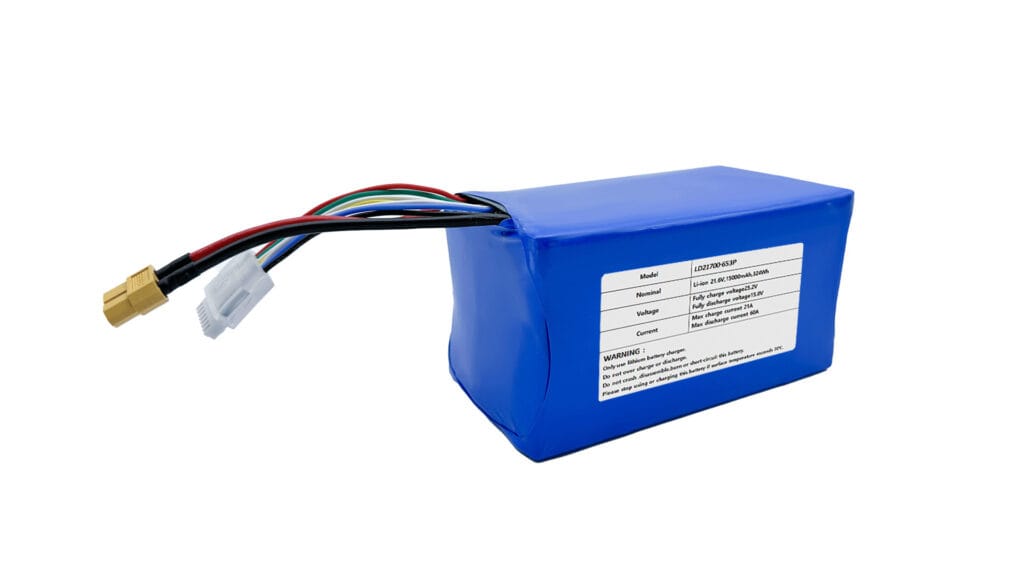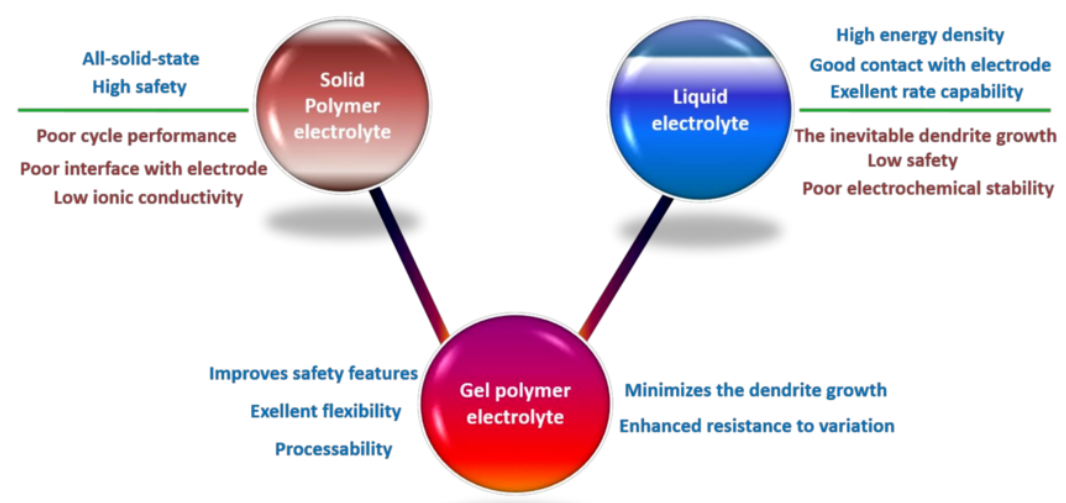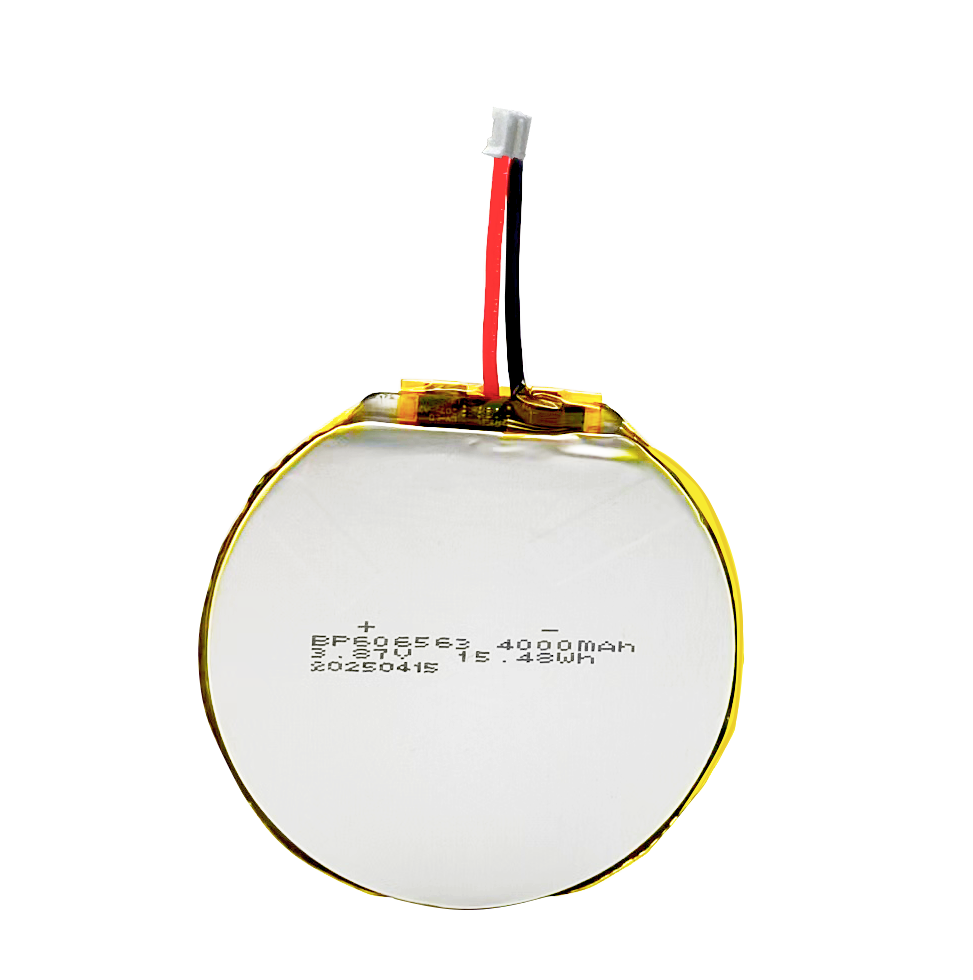In the fast-evolving landscape of wearable technology, innovation is a relentless pursuit. Just as our smartphones became indispensable, smart glasses are poised to transform how we interact with the digital world. Leading this charge is Xiaomi, which recently unveiled its highly anticipated AI Glasses. These aren’t just another gadget; they represent a significant leap forward, designed to seamlessly integrate AI into our daily lives. But beyond the impressive array of features and the sleek, lightweight design, one component stands out as particularly groundbreaking: the strategic integration of a silicon carbon battery.
The success of any truly wearable device hinges on its ability to offer extended usability without becoming cumbersome. This is where battery technology plays a pivotal role. For smart glasses – devices that demand continuous processing, connectivity, and potentially augmented reality overlays – traditional battery limitations have been a significant hurdle. Xiaomi’s decision to leverage cutting-edge silicon carbon battery technology is not merely a technical choice; it’s a strategic move to unlock enhanced performance, unprecedented longevity, and an uncompromised user experience, setting a new benchmark for the future of smart eyewear.
Understanding Xiaomi AI Glasses: Beyond the Battery
Launched on June 26, 2025, the Xiaomi AI Glasses are more than just a concept; they are a tangible reality weighing a mere 40 grams. This incredibly lightweight design is critical for a device meant for all-day wear, making them feel more like traditional eyewear than a bulky tech gadget.
At their core, these glasses are an on-the-go AI hub, powered by a sophisticated built-in Xiaomi AI system. This system supports multimodal capabilities that can genuinely enhance daily life:
- Object Recognition: Identify objects around you, from plants to products.
- Text Translation: Real-time translation in over ten languages, making international travel and communication effortless.
- Calorie Counting: Analyze food items to provide nutritional information.
- Daily Q&A: Your personal AI assistant, ready to answer queries as you see them.
- Super Xiao Ai Assistant: A powerful voice assistant for hands-free control and interaction.
The glasses are also equipped with robust camera and audio functionalities:
- Camera: A 12MP ultra-wide Sony IMX681 sensor captures high-quality photos and records 2K video at 30fps with electronic image stabilization (EIS). This allows for first-person perspective video recording and live broadcasting, sharing your view with the world.
- Audio: Dual symmetrical open-ear speakers offer an immersive audio experience while minimizing sound leakage, ensuring privacy. A five-microphone array, including a bone-conduction mic, provides clear voice pickup and exceptional wind-noise reduction, even when cycling at high speeds.
Design elements further enhance their appeal and usability. They feature a classic D-shaped frame made from TR90 nylon with aerospace-grade titanium alloy hinges for durability, optimized explicitly for Asian facial contours. Optional electrochromic lenses can adjust their tint in just 0.2 seconds, offering four levels of light transmittance. The Xiaomi AI Glasses also integrate seamlessly with the Xiaomi HyperOS ecosystem, allowing for smartphone pairing, collaborative camera use, and control of other smart devices, even supporting Alipay contactless payments with a glance and voice command.
What is Silicon Carbon Battery?
To understand why Xiaomi’s battery choice is so significant, we first need to delve into the technology itself. Silicon-carbon (Si-C) batteries represent a groundbreaking evolution from conventional lithium-ion (Li-ion) batteries, which have dominated the portable electronics market for decades.
The fundamental difference lies in the anode material. Traditional Li-ion batteries primarily use graphite as their anode. While graphite is effective, its capacity to store lithium ions is inherently limited (a ratio of 1 lithium atom per 6 carbon atoms in graphite, or LiC6).
Silicon-carbon batteries, on the other hand, incorporate silicon-based composites into their anodes. Silicon has a remarkably higher theoretical capacity for lithium storage – it can bind up to 15 lithium atoms per 3 silicon atoms (Li15Si4). This superior lithium-ion storage capability translates directly into significantly higher Energiedichte.
For context, conventional Li-ion batteries typically offer an energy density of around 250-300 Watt-hours per kilogram (Wh/kg). Silicon-carbon batteries, by leveraging silicon’s properties, can achieve energy densities ranging from 400-500 Wh/kg, and even higher in advanced prototypes. This means a silicon-carbon battery can pack substantially more power into the same, or even smaller, physical dimensions compared to a graphite-based Li-ion battery. Essentially, a silicon-carbon battery can store approximately 25% more charge than a Li-ion battery of identical size, a critical factor for compact devices like smart glasses.
Despite this revolutionary material change, the basic working principle remains the same: lithium ions move between the anode and cathode during charge and discharge cycles. The innovation lies in making the anode more efficient at storing these ions, fundamentally altering the power-to-weight and power-to-volume ratios of the battery.
The Unrivaled Advantages of Silicon-Carbon Battery Technology
The adoption of silicon-carbon battery technology is not merely an incremental upgrade; it offers a suite of transformative advantages for consumer electronics, particularly for space-constrained and power-hungry wearables.
- Higher Energy Density and Capacity: This is the most profound advantage. As explained, silicon’s ability to host more lithium ions means more power can be stored in a smaller, lighter package. For the Xiaomi AI Glasses, this translates to a modest 263mAh battery delivering an impressive 8.6 hours of mixed use – a feat that would be challenging, if not impossible, with a conventional battery of similar size.
- Verlängerte Batterielebensdauer: A direct consequence of higher energy density is longer operational times. For smart glasses meant for daily wear and continuous interaction, this is paramount. Users can engage with AI features, take photos, make calls, and listen to music for significantly longer without constantly worrying about recharging. The 8.6 hours of mixed use includes 15 one-minute video recordings, 50 photo shots, 90 minutes of Bluetooth calls, or 20 minutes of XiaoAi voice conversations, highlighting its robustness.
- Schnelleres Aufladen möglich: Silicon’s unique electrochemical properties allow it to absorb and release lithium ions more quickly than graphite. This facilitates rapid charging speeds. The Xiaomi AI Glasses, for example, can be fully charged in just 45 minutes via USB Type-C, minimizing downtime and maximizing convenience for busy users. Recent advancements in silicon anode tech are even pushing charging times to under 10 minutes for larger batteries, suggesting future potential for even faster speeds in wearables.
- Improved Performance in Extreme Temperatures: While all batteries face challenges in extreme cold or heat, silicon-carbon batteries often demonstrate better resilience. Companies like Honor have showcased their silicon-carbon batteries (e.g., in the Honor Magic 6 Pro) maintaining performance in temperatures as low as -18°C to -20°C. This robustness ensures reliable operation of smart glasses in various environmental conditions, from winter commutes to outdoor adventures.
- Enhanced Durability and Sustainability: When blended with carbon, silicon can create more stable and long-lasting battery structures, potentially leading to improved cycle life and reduced degradation over time. Furthermore, silicon is far more abundant than some of the rarer materials used in traditional battery chemistries, making silicon-carbon solutions potentially more sustainable and less prone to supply chain concerns in the long run.
- Enabling Sleeker and Lighter Designs: Perhaps most critically for wearables, silicon-carbon batteries empower manufacturers to create devices that are thinner, lighter, and more aesthetically pleasing without compromising on power. The 40-gram weight of the Xiaomi AI Glasses is a testament to this, proving that advanced functionality doesn’t have to come at the cost of comfort or style.
Why Xiaomi Opted for Silicon-Carbon: A Strategic Deep Dive
Xiaomi’s choice of silicon-carbon batteries for their AI Glasses is not an arbitrary technical decision but a calculated strategic move, perfectly aligned with their vision for next-generation personal smart devices.
- Achieving Unmatched Lightweight and Comfortable Design: The 40g weight of the Xiaomi AI Glasses is a standout feature. To pack sophisticated AI processing, a 12MP camera, multiple microphones, and dual speakers into such a featherlight form factor without compromising battery life demands an energy-dense solution. Silicon-carbon batteries were essential in meeting this stringent design requirement, ensuring the glasses are comfortable enough for all-day wear, truly blending into the user’s lifestyle rather than feeling like a burdensome gadget.
- Ensuring All-Day Usability for a Connected Lifestyle: In a world where devices need to keep up with our pace, an 8.6-hour mixed-use battery life is critical for smart glasses designed for continuous interaction. Whether it’s taking hands-free calls, translating foreign text on the go, or capturing spontaneous moments, the silicon-carbon battery provides the necessary endurance, alleviating battery anxiety that plagues many early wearable adopters.
- Facilitating Rapid Recharging for Minimal Disruption: The 45-minute quick charge time aligns perfectly with the fast-paced nature of modern life. Users can quickly top up their glasses during a coffee break or a short commute, ensuring they are always ready for action. This capability is a direct benefit of silicon’s fast ion absorption properties.
- Powering Energy-Intensive AI Features: The Xiaomi AI Glasses are not just passive displays; they are active AI assistants constantly processing environmental data, recognizing objects, and performing real-time translations. These AI functionalities, coupled with high-resolution video recording and sophisticated audio processing, demand significant power. The high energy density of silicon-carbon batteries provides the robust power source required to support these advanced, energy-intensive features without a bulky battery pack.
- Gaining a Significant Competitive Edge: By adopting silicon-carbon technology, Xiaomi positions itself as a leader and innovator in the nascent smart glasses market. This advanced battery solution provides a clear differentiator in terms of performance and user experience, attracting early adopters and setting a new standard that competitors will need to match. It underscores Xiaomi’s commitment to pushing technological boundaries rather than simply iterating on existing designs.
In essence, Xiaomi’s choice of silicon-carbon batteries reflects a holistic approach to product development, where battery technology is not merely a component but a foundational enabler for the desired user experience and strategic market positioning.
Xiaomi vs. Competitors: Battery Technology Comparison
The smart glasses market, while still emerging, is becoming increasingly competitive, with various players offering different approaches to functionality and design. However, battery life consistently remains a critical pain point across the board. Xiaomi’s adoption of silicon-carbon batteries gives its AI Glasses a distinct advantage in this crucial area.
Let’s compare the Xiaomi AI Glasses with a prominent competitor, the Ray-Ban Meta AI Glasses:
- Xiaomi AI Glasses: Equipped with a 263mAh silicon-carbon battery, offering an impressive 8.6 hours of mixed use. Its quick 45-minute charge time further enhances usability.
- Ray-Ban Meta AI Glasses: Typically offer around 4-6 hours of mixed use, depending on usage patterns. While still functional, this shorter duration can be a significant limitation for all-day wear and continuous engagement with AI features or media.
This comparison starkly highlights the power efficiency gained through Xiaomi’s silicon-carbon battery. Xiaomi effectively doubles the practical battery life in a similar form factor, without resorting to external battery packs or significantly heavier designs.
Other smart glasses on the market, such as XREAL Air/One und Viture Pro, are primarily display-focused and often rely on a wired connection to a smartphone or an external power bank for extended use. While this offloads the battery weight from the glasses themselves, it introduces a physical tether, which can be less convenient and less “seamless” than a truly standalone smart glass experience. Devices like Amazon Echo Frames, which prioritize audio and voice assistant features over displays, often offer comparable or slightly longer battery life but with a much more limited feature set compared to Xiaomi’s AI and camera capabilities.
Xiaomi’s strategic choice allows them to offer a richer, more integrated feature set (camera, AI, robust audio) within a lightweight, untethered form factor, all while providing superior endurance. This positions the Xiaomi AI Glasses not just as a competitor, but as a potential leader in defining the performance benchmarks for future smart eyewear, driven significantly by its advanced battery technology.
The Future and Challenges of Silicon-Carbon Batteries in Smart Glasses
The successful integration of silicon-carbon batteries in devices like the Xiaomi AI Glasses heralds a promising future for wearable technology. As research and development continue, we can anticipate even more significant advancements:
- Miniaturization and Enhanced Power: Future iterations of silicon-carbon batteries could become even smaller and more energy-dense, enabling designers to create smart glasses that are virtually indistinguishable from regular eyewear, yet packed with immense processing power for always-on AR experiences and more complex AI functionalities.
- Widespread Adoption: As manufacturing processes become more efficient and costs decrease, silicon-carbon batteries are likely to become the standard for high-performance wearables, extending their benefits beyond premium devices.
- New Form Factors: The flexibility and high energy density could unlock entirely new categories of wearable devices that were previously impossible due to battery limitations.
However, the journey of silicon-carbon batteries is not without its challenges:
- Volume Expansion: A primary challenge with silicon anodes is their significant volume expansion (up to 300%) during lithiation (when lithium ions enter the silicon structure). This expansion can lead to mechanical stress, cracking of the anode material, and rapid degradation of the battery’s cycle life. While carbon composites help mitigate this, ongoing research focuses on nanoscale engineering and advanced binders to address this issue more effectively.
- Manufacturing Costs: Currently, silicon-carbon batteries can be more expensive to produce than traditional graphite-based ones, although economies of scale and technological refinements are gradually reducing this gap.
- Solid Electrolyte Interphase (SEI) Formation: The reaction between silicon and the electrolyte can lead to an unstable and continuously growing SEI layer, which consumes lithium and reduces the battery’s overall capacity and cycle life. Innovations in electrolyte composition and anode coatings are crucial for addressing this.
Despite these hurdles, the rapid pace of innovation in battery science, exemplified by companies like Group14 Technologies achieving 1,500+ cycles with silicon batteries, indicates that these challenges are actively being tackled. Xiaomi’s early adoption demonstrates confidence in the technology’s maturity and its immense potential. This move sets a precedent for how battery innovation will continue to drive the evolution of smart glasses and other miniaturized, high-performance electronics.
Our Custom Battery Solutions for Smart Glasses
At Lan Dazzle, we understand that every smart glasses design comes with its own unique power requirements — from size constraints to performance expectations. That’s why we offer fully customized battery solutions, engineered to fit seamlessly into your device while delivering optimal performance.
Instead of using a one-size-fits-all approach, we collaborate with our clients to choose the most suitable battery chemistry and materials, including cutting-edge options like silicon carbon anodes, traditional graphite, or ultra-thin lithium polymer. Each choice is made based on your product’s power demands, form factor, and usage scenarios.
What Sets Our Smart Glasses Battery Solutions Apart:
-
Material Flexibility: Whether you need high energy density, long cycle life, or fast charging, we select and customize materials to match your priorities.
-
Precision Fit: Our batteries are designed in custom shapes and dimensions — from ultra-slim cells to curved or asymmetric formats — to maximize space utilization inside the glasses.
-
Leichtes Design: We prioritize low weight to ensure the final product is comfortable for all-day wear.
-
Advanced Safety Features: Our cells integrate multiple safety protections, critical for wearable electronics that stay close to the user.
-
Optimierung der Leistung: Through careful matching of chemistry and design, we ensure the battery complements your hardware’s full capabilities — from displays to processors and sensors.
With Lan Dazzle, you’re not just getting a battery — you’re getting a power solution that enhances the entire smart glasses experience. Let us help you bring your wearable innovation to life, powered by precision-engineered energy.
Conclusion: Powering the Smart Future
The launch of Xiaomi’s AI Glasses, powered by cutting-edge silicon-carbon battery technology, marks a pivotal moment in the evolution of smart wearables. This strategic choice underscores Xiaomi’s commitment not just to introduce new devices, but to redefine what’s possible in terms of user experience, design, and performance.
By harnessing the superior energy density, faster charging capabilities, and lightweight potential of silicon-carbon batteries, Xiaomi has delivered a product that offers extended usability and powerful AI features in an incredibly comfortable form factor. This move not only gives the Xiaomi AI Glasses a significant competitive edge over existing smart eyewear but also illuminates the path for future innovations across the entire wearable tech industry. As battery technology continues to advance, we can anticipate a future where our smart glasses become even more indispensable, seamlessly blending digital intelligence with our physical world, all powered by the quiet revolution of advanced battery chemistry.





